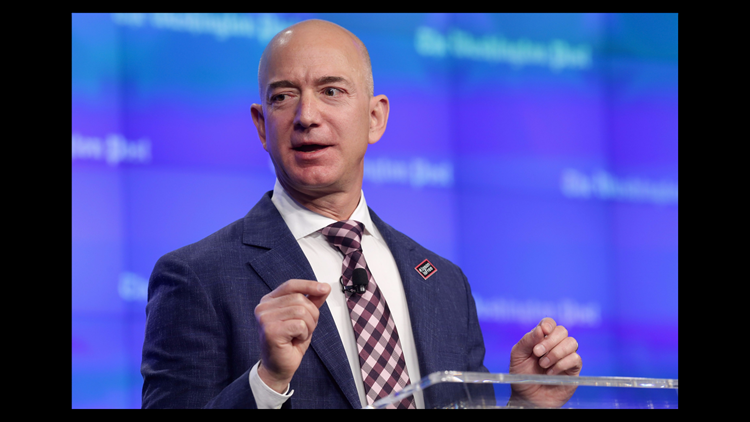Movies and TV, distribution centers and India. Those are three of the biggest money sinks Amazon’s got going now – all aimed at growing the company and, secondarily, the bottom line.
The feverish pace at which the Seattle online behemoth is building fulfillment centers feeds on the importance of its Prime memberships and same-day delivery services. It's also pushing hard into India to ensure that it doesn't miss out on what, according to the United Nations, will be the world's largest population within six years.
Amazon (AMZN) is famous for spending on things that can seem like long shots but pay off big in the end. Take, for example, its enormously profitable web service division AWS. In the fourth quarter of 2016 the division that many businesses use to run their own websites accounted for 8% of the company's revenue but represented more than half of its operating income.
Will movies and streaming TV be next?
The Boston Consulting Group estimated that Amazon spent $3.2 billion on content in 2016. The company said last June it planned to double its spending on video content and triple it on original content.
Amazon is scheduled to announce its quarterly financial results at the close of trading on Thursday. Revenue for the company is forecast at $35.3 billion, according to analysts polled by S&P Global Market Intelligence. But against that sales firehose, profit is forecast at only $531 million, or a $1.10 a share, adjusted. Last quarter, when sales hit $43.7 billion, operating expenses were $42.5 billion.
Adding to expenses? Increasingly, creating must-watch programs.
“Every quarter is not a signal of their future health, it’s really a choice of where they chose to invest. They’re crystal clear that they’re not managing for quarterly earnings,” said Michael Pachter, an Amazon analyst with Wedbush Securities in Los Angeles.
Content is a newly burgeoning aspect of that spending. “If they decide to invest $1 billion in streaming content, for example, that could impact things,” said Pachter.
Amazon is part of an ongoing arms race among streaming services such as Netflix, Hulu and HBO, all of which are competing to have the most must-watch content.
It's paying off in prestige, certainly.
Amazon Studios won three Oscars this year. One was for best original screenplay for "Manchester By the Sea," another to Casey Affleck for best actor for the movie’s lead role. The third was for best foreign language film for "The Salesman," an Iranian drama.
Amazon, Netflix elbow into Oscars with 4 wins
For Amazon, those awards represented a vindication of its efforts to buy, license or create movies and shows.
While the company’s always been happy to throw digital spaghetti at the wall and see what sticks in terms of its projects, its heavy move into video, which began in 2015, is something of a brave new world.
It means the company has to “live in the Hollywood economy, one in which a very small number of your products are profitable and those profitable ones fund experimentation,” said Paul Verna, principal video analyst with eMarketer in New York City.
The good news for Amazon is that it can make use of its deep and broad knowledge about its customers, their interests and their habits to help it make educated guesses about what will sell.
“They’ve done it in the retail space, now they’re leveraging that kind of data in the entertainment space. They’ve got entire teams of people working on this,” Verna said.
It doesn't hurt that unlike other content producers, Amazon doesn't need to make a profit from its offerings, it only has to be ever more enticing to its hugely profitable Prime members.
According to Consumer Intelligence Research Partners, 80 million Americans are now members of the service. They not only pay $99 (generally) for the privilege but also spend on average $1,300 per year compared with $700 for non-members.
“Content is a difficult enough business to turn a profit, but Amazon’s key advantage is that its business is so incredibly diverse. From Amazon Studios to Amazon Web Services to its retail operations, any division can make a profit that raises all of the other divisions. For Amazon, the tide indeed does raise all ships,” said Glenn Hower, a senior research analyst with Parks Associates.



